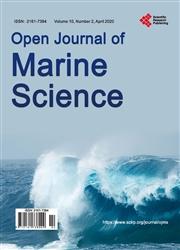Invasion of Danish and adjacent Waters by the comb jelly Mnemiopsis leidyi - 10 years after
引用次数: 6
Abstract
The invasive ctenophore Mnemiopsis leidyi, which comes from North America’s east coast, was observed in Danish waters for the first time in 2007. Since then, the new invader has every summer spread in Danish and adjacent waters (i.e. North Sea, Limfjorden, Skagerrak, Kattegat, Belt Sea, Baltic Sea). The invasive comb jelly has apparently come to stay, as it has no effective enemies. Possible harmful effects of M. leidyi which feeds voraciously on zooplankton, fish eggs and larvae, have so far not been thoroughly studied in Danish waters, although dedicated attempts have been made in Limfjorden and in the central Baltic Sea. Over the last 10 years, the Danish national environmental monitoring program did not include gelatinous zooplankton, but new initiatives have been recently taken. A brief overview of our current knowledge on the impact of M. leidyi in Danish waters is given here.丹麦及邻近水域的蜂状水母入侵- 10年后
2007年,首次在丹麦水域观察到来自北美东海岸的入侵性栉水母Mnemiopsis leidyi。从那时起,新的入侵者每年夏天都会在丹麦和邻近水域(即北海、林峡湾、斯卡格拉克、卡特加特、贝尔特海、波罗的海)传播。侵入性梳子果冻显然已经存在,因为它没有有效的敌人。尽管在Limfjorden和波罗的海中部已经进行了专门的尝试,但迄今为止,在丹麦水域尚未彻底研究以浮游动物、鱼卵和幼虫为食的M.leidyi可能产生的有害影响。在过去的10年里,丹麦国家环境监测计划不包括凝胶状浮游动物,但最近采取了新的举措。这里简要介绍了我们目前对M.leidyi在丹麦水域的影响的了解。
本文章由计算机程序翻译,如有差异,请以英文原文为准。
求助全文
约1分钟内获得全文
求助全文

 求助内容:
求助内容: 应助结果提醒方式:
应助结果提醒方式:


